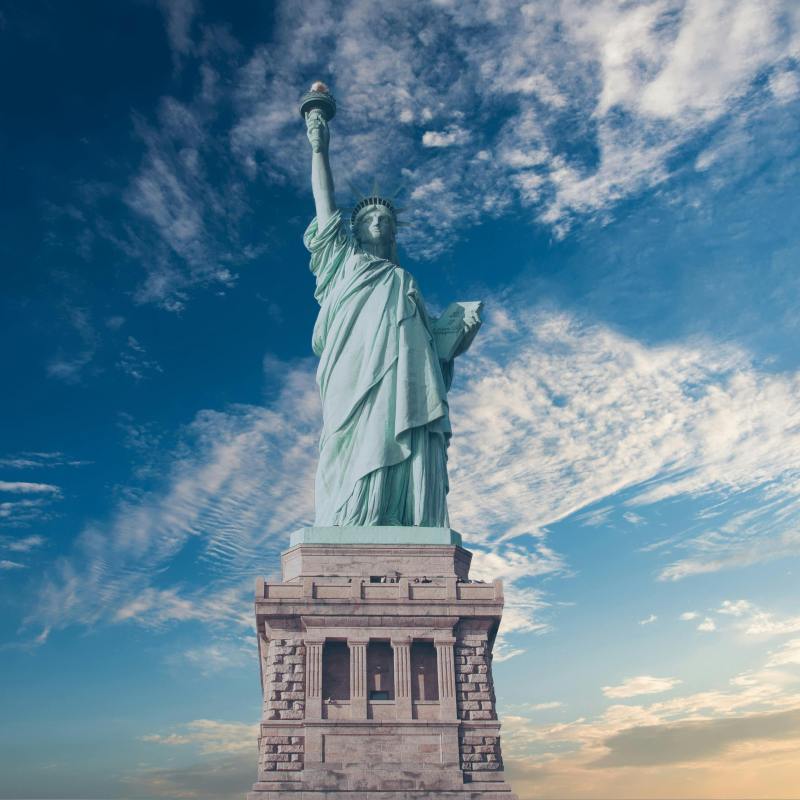
It’s easy to get worried while traveling—especially internationally.
Videos by TravelAwaits
When we leave home, we’re exposed to new lifestyles, customs, and social cues. It’s easy to miss something and suddenly feel lost. And that vulnerability can feel a little scary.
But when it comes to real danger abroad, the focus is usually on pickpockets, scammers, and nightmares like robbery. Though these are genuine threats, they aren’t overtly commonplace.
Thanks to a myriad of factors (from Hollywood hits like Taken to the 24-hour news cycle) we tend to focus on what could go wrong. That heightened sense of suspicion might be a little surprising for non-Americans—many of whom have their own qualms about visiting the US.
In fact, the United States of America was recently listed in the Top 50 Conflict-Ridden Countries by the ACLED.
ACLED lists US as “turbulent”
So, what’s the ACLED?
The Armed Conflict Location & Events Data (ACLED) is an international watchdog group that compiles data on things like political violence and protest trends from around the world.
Founded in the early 2000s in the US, the ACLED helps monitor things like elections and the democratic process, while also creating profiles for conflict groups. To put it simply, they monitor insecurity trends.
The group focuses strongly on data-driven metrics, which are used to inform groups like the United Nations, WHO, IMF, and World Bank. The data is usually used to create funding and aid programs for nations that lack secure governance.
The ACLED releases its Top 50 Conflict-Ridden Countries list annually. There are three tiers used to classify a country’s state of danger: extreme, high, and turbulent, respectively. The US was listed alongside 19 other countries as ‘turbulent’, including Libya.
This label means that a country is experiencing conflict in a general way—which could be a sign of positive change, political unrest, or many other factors.
Uniquely, Voices of America reports that the US is the only Western country to make the list. (Mexico is listed much higher—though it’s debatable whether or not it’s a Western nation.)
How did the US end up on the list?
Now on to the obvious and most pressing question—how did the US end up on this list?
The ACLED has had its eye on the US, so to speak, since 2020. Since then, the US has hit two metrics in the ‘turbulent’ category: danger to civilians and armed group fragmentation.
Danger to civilians describes run-ins between official authorities and citizens. These incidents can happen during protests, riots, and other public demonstrations. It also covers incidents of police violence.
Armed group fragmentation is the formation and proliferation of organized and armed groups. As one of the world’s most armed nations, the US regularly sees attention from watchdog groups that focus on gun violence.
However, armed group fragmentation extends beyond the scope of owning guns—it specifically covers political conflicts, in this case.
If you have a few questions at this point, you aren’t alone.
I dug a bit deeper to explore what data, exactly, the ACLED uses to make its final 50 selections. The metrics focus on reported incidents—and the US, despite its civil unrest, still maintains freedom of the press.
In other words, we might have ended up slightly higher on the ACLED’s list because we do a pretty good job of reporting violent crime. Countries where a free press and the police are closely monitored might not report all incidents.
France & Canada could be next
The US isn’t alone in terms of western nations ending up on the ACLED’s radar. France and Canada might end up on the list, too. (It’s almost like seeing your friends walk into the detention room, no?)
France has seen massive political unrest and upheaval over the last few years. Last year, anti-police riots locked the city of Paris down after an officer shot and killed a teenager in its suburbs.
Many publicly funded institutions, including trash removal, stepped up to protest other things like pension reforms.
Canada, on the other hand, seems to have been affected by some of the US’s conflict. In particular, protests and violence against LGBTQ+ groups have increased. Though the number of incidents remains negligible by comparison to the US, Canada is now being closely monitored by the ACLED.
